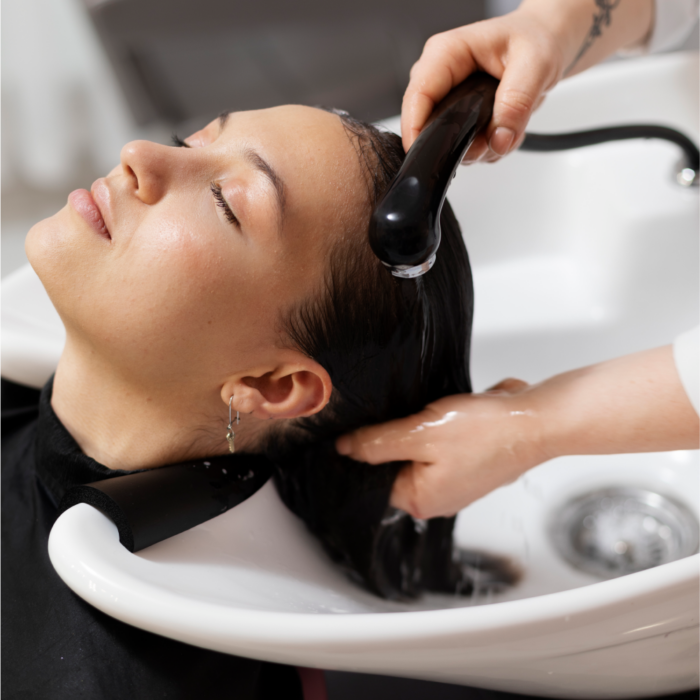Treatment Explained
Treatment Explained
What is hair loss?
Gradual loss of hair (and its re-growth) is a normal part of life. Human beings lose 50 to 100 hairs each day, mostly without even noticing. Hair loss becomes a condition that affects our lives when we’re losing more hair than normal or when we’re losing a lot of hair from one (or many) small areas of the body, which may result in bald patches or baldness. Hair loss is also referred to as alopecia, and there are many different types of it.
The most common types of hair loss are:

What causes hair loss?
The different types of hair loss have different causes, as well as presenting in slightly different ways. Correctly diagnosing the condition is necessary for selecting the right treatment.
-
Male and female pattern hair loss (androgenetic alopecia)
In each of these sections we’ve taken the approach of using the common term for the condition first, with the medical term in brackets afterwards. Since the reader isn’t an expert, we felt that this was a good approach, rather than putting the medical term first. However, we’re happy to reverse it if you’d prefer to lead with the medical term. This shows up differently in men and women, with men experiencing a receding hairline and loss of hair from the crown. Women generally experience a thinning of the hair across the whole scalp. Pattern hair loss is hereditary, it runs in families and tends to happen as we age. Over time, the hair follicles can become more sensitive to one of the hormones that affect hair growth: DHT (dihydrotestosterone). This can cause a reduced blood supply to the hair follicles and, therefore, lead to hair loss.
-
Spot baldness (alopecia areata)
Sufferers experience small, coin shaped patches of baldness on the scalp, beard, eyebrows, eyelashes, limbs and groin. Over time the patches may become bigger and may result in hair loss over the whole scalp (alopecia totalis) or over the entire body (alopecia universalis). It is believed to be an autoimmune condition where hair follicles are attacked by the body’s immune system, causing inflammation and stopping the follicle from producing hair. When it is treated early, the chances of hair re-growing are much better.
-
Hair shedding (telogen effluvium)
For a healthy scalp, approximately 85% of hair follicles are in a growth phase (anagen hair) and 15% are in a rest phase (telogen hair). In sufferers of telogen effluvium, a much greater percentage of hair follicles go into a rest phase, leading to unusual hair shedding. This can be triggered by a variety of things including: acute or chronic illness; a surgical operation; psychological stress; weight loss, excessive exposure to the sun and endocrine disorders. The hair loss will not usually be noticed until 2-4 months after the trigger event, as it takes this long for the hair to be lost from a ‘resting’ follicle.
-
Scarring alopecia
As with alopecia areata, scarring alopecia is an autoimmune condition. In scarring alopecia, the hair follicles are destroyed and are replaced with scar tissue. This means the hair cannot re-grow and the condition tends to progress, meaning more hair is lost as time goes on. The triggers for the autoimmune response are not yet known, though it’s believed that both hormones and environmental factors are involved.
-
Other causes of hair loss
Hair loss is also commonly caused by ringworm, a fungal infection that can be found on the scalp and leaves bald patches. The hair will typically re-grow once the fungal infection has been treated. Another common cause of hair loss is psoriasis on the scalp and, again, once the psoriasis is treated the hair will re-grow. Another well known cause of hair loss is as a side effect of chemotherapy. Hair usually re-grows after chemotherapy, but it may be different in colour and texture once it re-grows.
How to treat hair loss?
Once the cause of hair loss has been established, the most suitable course of treatment can be decided.
At-home Self-Care treatments
At Hannah London, we advise on shampoos, conditioners, topical oils and serums based on the clinical evidence. These are a gentle way to treat hair loss and support hair re-growth and may be used alongside other treatments.
Nutritional supplements that include vitamins, particularly some antioxidants, are used to naturally support scalp health.
Other at-home treatments include:

General treatments for hair loss
LED light therapy involves using low-dose laser treatments to gently stimulate blood flow to the scalp, which then encourages more hair growth.
Find out more about LED therapy for hair loss
Platelet rich plasma (PRP) is delivered by injection and the platelets (a type of blood cell) boost the body’s natural healing process, improving blood flow to the hair follicles and promoting hair growth.
Find out more about PRP for hair loss
Microneedling, a treatment also used for acne, uses surgical needles to create microscopic injuries to the skin. It regenerates the hair follicles and will improve the absorption of other products applied to the scalp.
Find out more about microneedling for hair loss
Fungal treatments may be needed in the case of ringworm, which is a fungal infection. They stop the infection, allowing the hair to re-grow naturally.
Find out more about fungal treatments
Topical corticosteroids may also be used, for example to treat psoriasis of the scalp or to treat spot baldness.
Find out more about topical steroids for hair loss
In some conditions, the hair loss is advanced and will not re-grow. At Hannah London we provide referrals to trusted hair transplant clinics, following discussion with a patient to fully understand their condition and their needs.
Find out more about hair transplants
Treatments for pattern hair loss
Minoxidil is a prescription medication used to treat both male and female pattern hair loss. It is a topical foam or solution applied directly to the scalp. Finasteride is a prescription medication used to treat male pattern hair loss. It is a tablet taken once per day.
Find out more about prescribed medications for hair loss
Botox is also an effective and gentle way to treat male-pattern hair-loss. Botulinum toxin is injected into to the scalp and helps relax the scalp muscles and increase blood flow to the scalp and hair follicles, which supports hair growth.
Find out more about botox for hair loss
Microneedling, mentioned above, is used along with PRP (platelet rich plasma) to treat pattern hair loss. Microneedling uses surgical needles to create microscopic injuries to the skin to regenerate the hair follicle and it improves the absorption of the PRP.
Find out more about microneedling for hair loss
Mesotherapy (also known as intradermal hair growth cocktail) involves injecting a combination of medications and supplementary solutions into the middle layer of skin of the affected areas.
Find out more about mesotherapy for hair loss
Common treatments for spot baldness
Topical corticosteroids can be used to reduce inflammation and help hair follicles to recover and allow re-growth of hair.
Find out more about LED therapy for hair loss
Intradermal steroids are injected into skin just under the affected areas and hair re-growth is usually seen at the injection site within 4-6 weeks.
Find out more about intradermal steroids for hair loss
Mesotherapy, as mentioned above, is also used to treat spot baldness. It involves injecting a combination of medications and supplementary solutions into the middle layer of skin of the affected areas.
Find out more about mesotherapy for hair loss
Two new medications are also available for severe spot baldness, Litfulo and Olumiant. They are available as private prescriptions and work by interrupting the auto-immune attack.
Find out more about Litfulo and Olumiant for hair loss
Meet one of our doctors for a consultation to discuss your treatment options
Welcome to
Hannah London
We’re a team of aesthetic and medical specialists lead by Dr Kaywaan Khan. We provide award-winning facial, body and hair treatments to clients across London.
Our ethos is to offer cutting-edge treatments in a luxurious setting, ensuring that you leave our clinic feeling pampered and looking fabulous.

